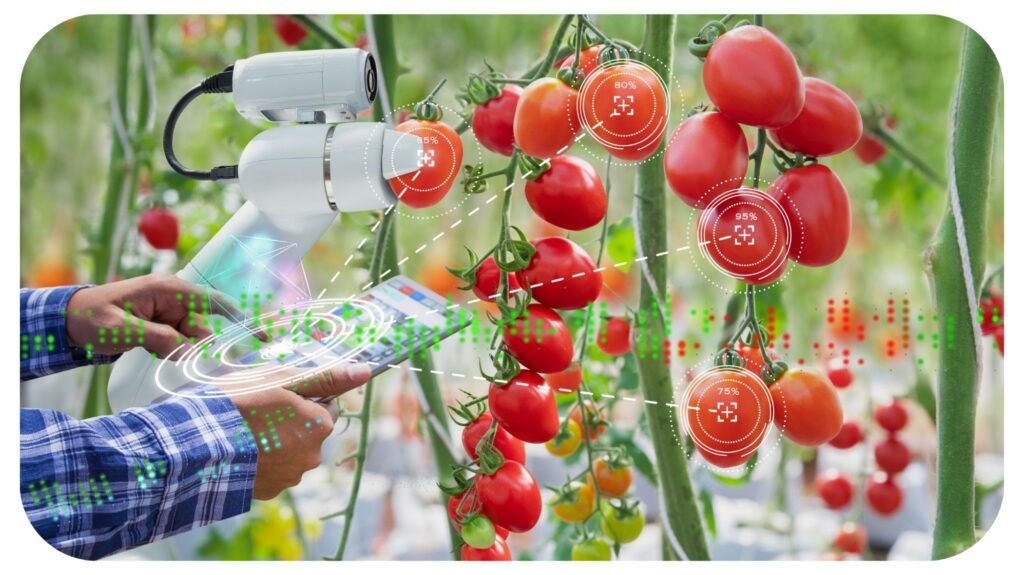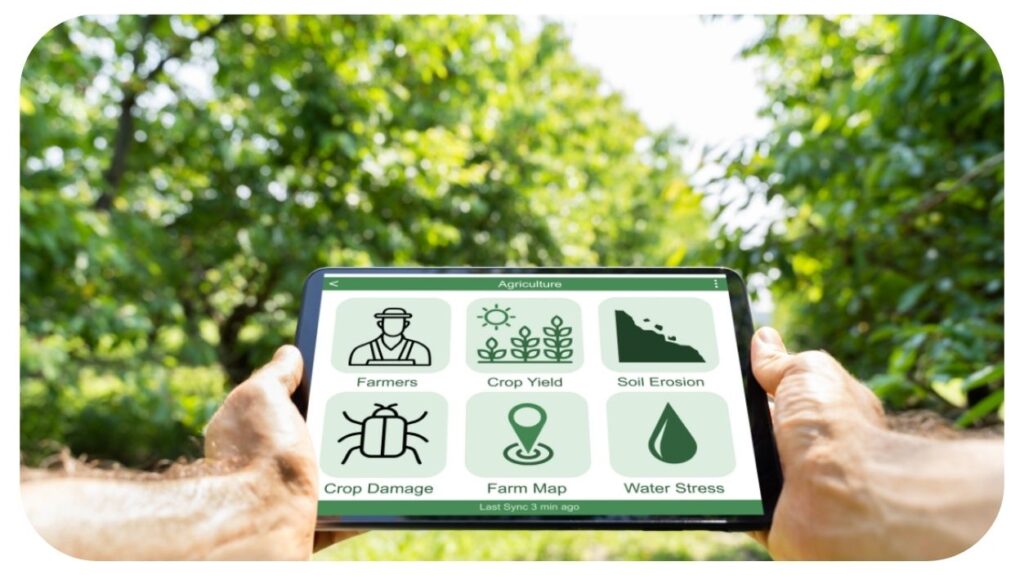Boosting Agricultural Productivity: Lessons from Meg Miller’s Experience

Agricultural productivity, often measured as the ratio of agricultural outputs to inputs, is an essential component in the quest for global food security and economic stability.
In simple terms, it reflects the efficiency with which agricultural resources are utilized to produce food, feed, fiber, and fuel. The significance of agricultural productivity transcends the boundaries of individual farms, influencing entire economies and livelihoods.
As the world’s population continues to grow, the demand for food and agricultural products surge. Efficient agricultural productivity is paramount to meeting this escalating demand, ensuring a sustainable and secure future for communities worldwide. It encompasses various facets, including crop yield, resource optimization, and environmental sustainability. Veterinary technician and agricultural professional, Meg Miller has spent much of her life learning the latest innovations, technologies and techniques to improve agricultural yield and efficiency. She provides her unique insights on boosting agricultural productivity based on first-hand experience.
Contents
ToggleCurrent Challenges in Agricultural Productivity
Despite its critical role, agricultural productivity faces challenges that impede its growth and efficacy. Climate change poses a significant threat, presented in erratic weather patterns, extreme temperatures, and unpredictable precipitation. These variables disrupt traditional agricultural practices, leading to reduced crop yields and increased vulnerability to pests and diseases.
Land degradation further compounds these challenges, compromising soil fertility and reducing arable land. Additionally, the scarcity of water resources, exacerbated by climate variability, poses a formidable obstacle to agricultural productivity, especially in regions dependent on rain-fed agriculture.
Economic factors also play a pivotal role, with farmers grappling with rising input costs, market uncertainties, and access to credit. Lack of technological adoption and inadequate knowledge transfer exacerbate the difficulties faced by farmers, hindering their ability to implement innovative and efficient practices.
Sustainable Farming Practices
Sustainable agriculture represents a holistic approach to farming that seeks to balance environmental health, economic profitability, and social equity. It acknowledges the interconnectedness of ecological systems and aims to minimize the negative impacts of agricultural activities on the environment. Sustainable farming practices are designed to promote long-term resilience, preserving the fertility of the land while ensuring the well-being of future generations.
In sustainable agriculture, farmers employ techniques that prioritize environmental conservation, reduce reliance on external inputs, and foster biodiversity. These practices not only address the challenges posed by climate change but also contribute to the overall health and productivity of agricultural landscapes.
“The adoption of sustainable farming practices yields a plethora of benefits that extend beyond the immediate agricultural landscape,” says Meg Miller. “It enhances soil health by minimizing erosion, preserving soil structure, and promoting organic matter. This, in turn, contributes to increased water retention and nutrient availability, crucial factors in optimizing crop yields.”
Sustainable agriculture plays a pivotal role in mitigating the impacts of climate change. Practices such as agroforestry and cover cropping sequester carbon, reducing the carbon footprint associated with agricultural activities. Additionally, by promoting biodiversity, sustainable farming enhances natural pest control mechanisms, reducing the reliance on chemical inputs.
Economically, sustainable farming practices offer a pathway to increased profitability. While initial investments may be required for implementation, the long-term benefits, including reduced input costs and improved resilience to climatic variations, contribute to a more stable and economically viable agricultural system.
Implementation Strategies
Crop rotation is a fundamental practice in sustainable agriculture, involving the systematic rotation of crops in a specific sequence. This technique disrupts pest and disease cycles, enhances soil fertility, and reduces the need for chemical inputs. By diversifying the types of crops grown, farmers can optimize nutrient utilization and minimize the risk of soil-borne pathogens, resulting in healthier and more productive agricultural systems.
Conservation tillage techniques, such as no-till or reduced tillage, aim to disturb the soil as little as possible during planting. This approach helps retain soil structure, prevent erosion, and conserve moisture. Conservation tillage not only enhances soil health but also reduces fuel consumption and labor costs, making it an economically and environmentally sound practice.
Integrated Pest Management (IPM) is a comprehensive strategy that combines biological, cultural, and mechanical methods to manage pests effectively. By emphasizing natural predators, crop rotation, and resistant crop varieties, farmers can minimize the need for chemical pesticides. IPM not only reduces environmental impacts but also maintains the balance of ecosystems, promoting a sustainable and resilient agricultural environment.
Technology Integration in Agriculture
In the relentless pursuit of enhancing agricultural productivity, the integration of cutting-edge technologies is transforming the industry. Precision farming, also known as precision agriculture, represents a paradigm shift in the way we approach cultivation. By leveraging sophisticated technologies, farmers can optimize resource use, improve efficiency, and make informed decisions based on real-time data.
Global Positioning System (GPS) technology has become a linchpin in precision farming. By utilizing satellite-based navigation, farmers can precisely map their fields, enabling accurate and efficient management of resources. GPS-guided tractors and equipment ensure precise planting, harvesting, and application of inputs, reducing overlap and minimizing resource wastage. The result is not only increased operational efficiency but also a significant reduction in fuel consumption and environmental impact. Remote sensing technologies, including drones and satellite imagery, provide farmers with a bird’s-eye view of their fields.
Notes Meg Miller, “These tools enable the monitoring of crop health, identification of pest infestations, and assessment of overall field conditions.”
By analyzing this data, farmers can make timely and targeted interventions, optimizing crop management strategies. Remote sensing contributes to resource conservation by facilitating the early detection of issues, ultimately bolstering agricultural productivity.
Farm Automation
Water scarcity is a critical challenge in agriculture, and smart irrigation systems have emerged as a beacon of hope in addressing this issue. These systems utilize sensors and data analytics to assess soil moisture levels, weather conditions, and crop water requirements. By automating irrigation processes, farmers can ensure that crops receive the precise amount of water they need, reducing water wastage and enhancing water use efficiency. The result is not only the preservation of a precious resource but also improved crop yields and resilience.
The integration of automated harvesting machinery signifies a leap forward in labor efficiency and overall productivity. From autonomous harvesters to robotic pickers, these technologies streamline the harvesting process, reducing the dependence on manual labor. Automated machinery operates tirelessly, ensuring a faster and more efficient harvest, crucial in meeting the demands of a growing population.
The marriage of precision farming and farm automation heralds a new era in agriculture, where data-driven decision-making and technological innovation converge to redefine farming practices. The benefits extend beyond individual farms, contributing to the sustainability and resilience of the entire agricultural sector.
Soil Health Management
The soil, a living ecosystem teeming with microorganisms, plays a pivotal role in sustaining plant life. Recognizing the intricate web of interactions within the soil is fundamental to ensuring its long-term fertility and productivity. Soil health goes beyond mere fertility; it encapsulates the physical, chemical, and biological aspects of the soil. A healthy soil structure facilitates water retention, prevents erosion, and promotes root development.
“The chemical composition influences nutrient availability, impacting plant growth and resilience. The biological component, comprising a diverse array of organisms, contributes to nutrient cycling and pest regulation,” says Miller.
Conducting comprehensive soil analyses provides farmers with insights into the nutrient composition of their soil. Armed with this knowledge, they can tailor nutrient management strategies to meet the specific needs of their crops, avoiding both deficiencies and excesses that may impede growth. Nutrient management involves the judicious application of fertilizers based on soil test results and crop requirements. This precision not only optimizes resource use but also mitigates the risk of nutrient runoff, a major contributor to water pollution.
Cover crops, strategically planted between cash crops, provide a protective blanket for the soil. They prevent erosion, suppress weeds, and enhance organic matter content, fostering a conducive environment for beneficial soil organisms. Crop residue management involves the thoughtful handling of leftover plant material after harvest. Instead of conventional practices like burning or complete removal, retaining crop residues on the field contributes to soil health.
The symbiotic relationship between cover crops and residue management extends beyond soil health. It also contributes to pest management, reducing the need for chemical interventions. Furthermore, the carbon-rich organic matter enhances soil structure, creating a resilient foundation for crops to thrive. In essence, soil health management is a multifaceted strategy that encompasses testing, targeted nutrient application, cover cropping, and residue management.

Farmer Education and Training
Knowledge transfer programs play a pivotal role in disseminating the latest advancements, best practices, and innovative techniques directly to the farming community. These programs are designed to bridge the gap between traditional farming methods and contemporary, science-backed approaches. Workshops, seminars, and demonstration plots serve as platforms where farmers can interact with agricultural experts, agronomists, and researchers. The exchange of practical insights and firsthand experiences cultivates a culture of continuous learning, ensuring that farmers stay abreast of the evolving nuances in agriculture.
Equipping farmers with easy access to resources and information is fundamental to their ability to make informed decisions. In an era dominated by technology, digital platforms, mobile applications, and online databases become indispensable tools. These resources provide farmers with real-time information on weather patterns, market trends, and innovative farming techniques.
Ensuring widespread access to these resources is crucial, especially in remote or underserved agricultural communities. The democratization of information empowers farmers to make decisions that align with both their individual needs and broader sustainability goals. By breaking down informational barriers, farmers can optimize their practices, enhance productivity, and contribute to the overall resilience of the agricultural sector.
Government Initiatives and Support
Recognizing the pivotal role farmers play in the economic fabric of nations, governments worldwide are increasingly implementing initiatives to support and uplift the agricultural community. These initiatives encompass a spectrum of measures, from financial support and subsidies to the establishment of agricultural extension services.
Financial support often comes in the form of subsidies for essential inputs, such as seeds, fertilizers, and machinery. Government-sponsored training programs further complement these efforts, equipping farmers with the skills needed to adopt modern, sustainable practices. Additionally, extension services connect farmers with experts, ensuring that scientific knowledge is directly translated into actionable strategies on the field.
Government support extends beyond the immediate needs of farmers to address broader challenges, such as infrastructure development, research funding, and policy frameworks that incentivize sustainable practices. By fostering an environment conducive to innovation and providing a safety net for farmers facing uncertainties, governments play a pivotal role in ensuring the long-term viability of agriculture.
Recommended: Meg Miller Talks About Freshwater Fishing | How to Get Started
The Continued Quest for Productivity in Agriculture
The future outlook for agricultural productivity holds promise and challenges. Rapid technological advancements, coupled with an increasing global population, necessitate a continual evolution in farming practices. Precision agriculture, artificial intelligence applications, and biotechnology are poised to play pivotal roles in shaping the future of agriculture.
The looming specter of climate change, however, underscores the urgency of adopting resilient and sustainable practices. Developing climate-smart agriculture, resilient crop varieties, and adaptive strategies will be imperative to mitigate the impacts of unpredictable weather patterns and ensure food security in the face of environmental uncertainties. Farmers, agricultural scientists, policymakers, and industry leaders must collaboratively engage in fostering a culture of innovation, sustainability, and knowledge-sharing.
Recommended For You
How to Balance Owning a Business With Being a New Mom
Most Inside
Most Inside offers high-quality recommendations and valuable updates to enhance all aspects of your life, providing premium guidance and enriching experiences.




